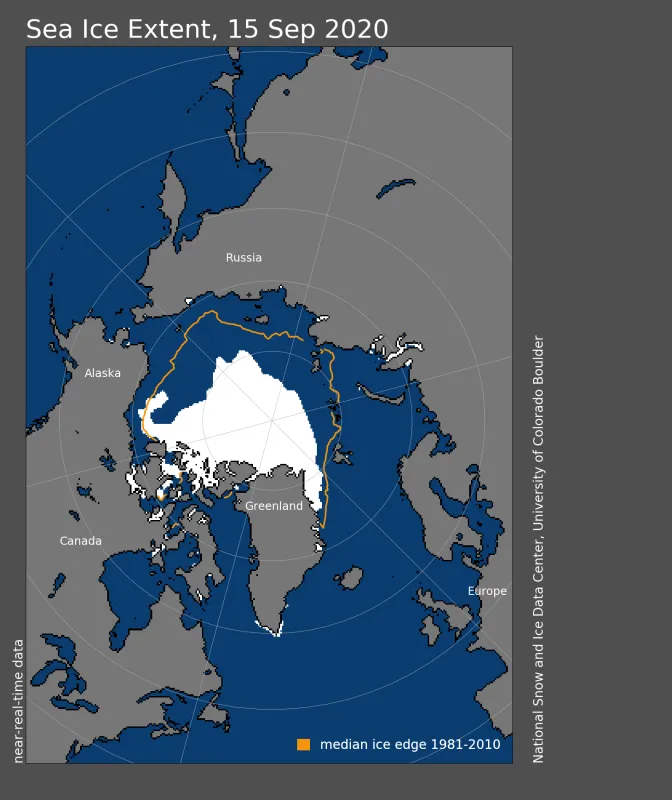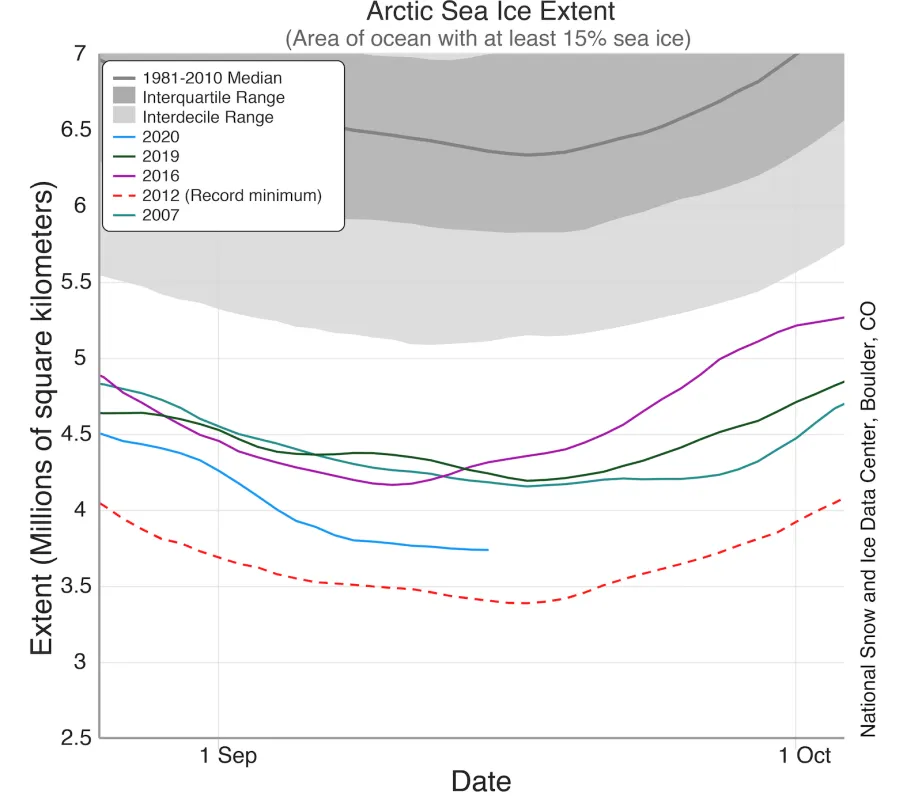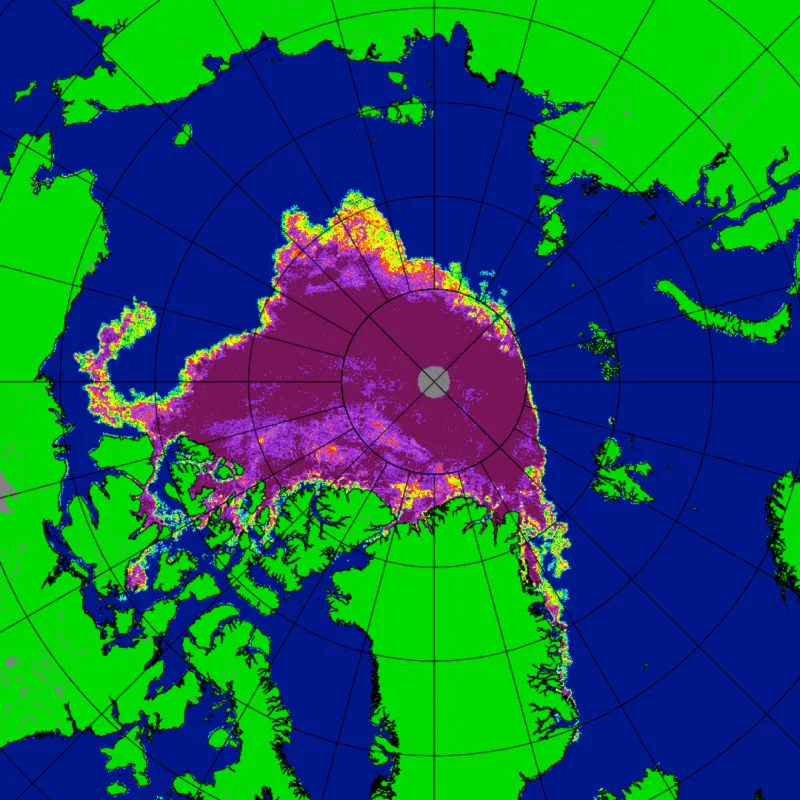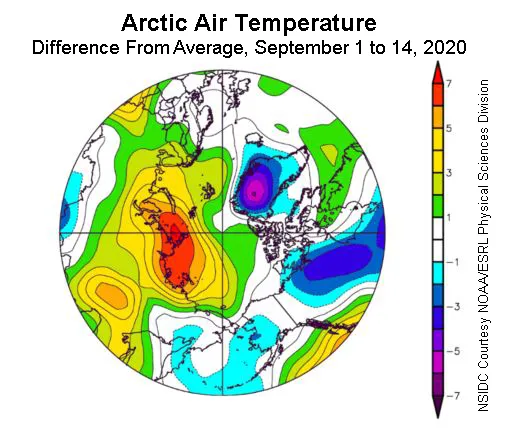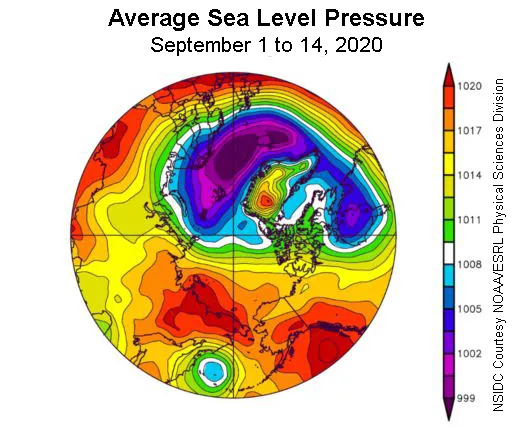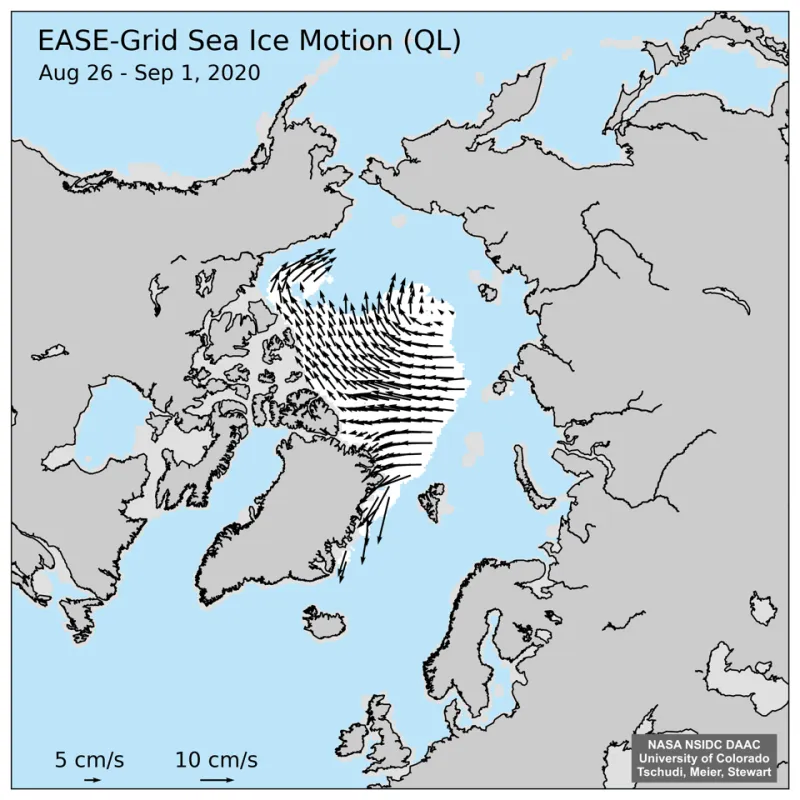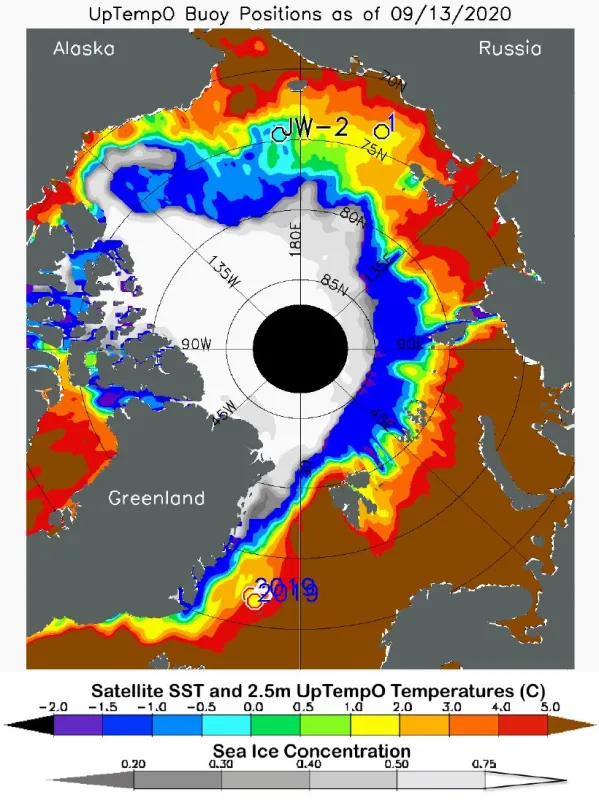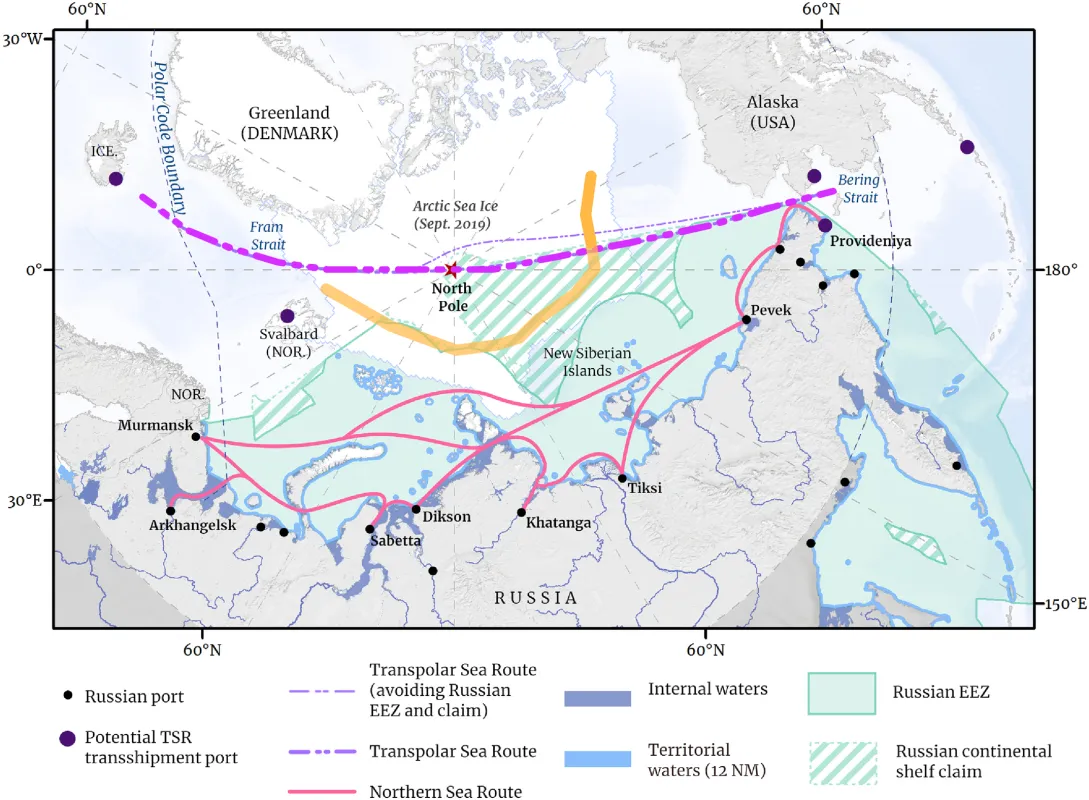In the first week of September, sea ice extent took a sharp downward turn, exceeding the pace of decline for any previous year during that period, and placing the 2020 sea ice minimum firmly as second lowest—after 2012—in the 42-year continuous satellite record. Pulses of warm air from north-central Siberia are responsible for the late downward trend. Sea ice decline has slowed in the past few days, and the annual minimum is imminent.
Overview of conditions
Sea ice extent stood at 3.74 million square kilometers (1.44 million square miles) on September 15, already well below 2007, 2016, and 2019 and within 400,000 square kilometers (154,400 square miles) of the record low extent set in 2012 (Figure 1a). Sea ice extent has dropped below 4 million square kilometers (1.54 million square miles) only once before, in 2012 (Figure 1b). Between August 31 and September 5, 2020, sea ice extent decreased by an average of 79,800 square kilometers (30,800 square miles) per day. This is a greater loss rate than any other year for these six days in the sea ice record. Ice retreat during this period was along the ice front in the northern Barents, Kara, and Laptev seas. A remaining tail of multiyear ice extends into the southern Beaufort Sea north of the Mackenzie River Delta and the Alaskan North Slope. North of Scandinavia and Russia, a very broad sea-ice-free area exists with the ice edge lying near 85 degrees N, far to the north of Svalbard, Franz Josef Land, and Severnaya Zemlya (Northern Land) (Figure 1c). The sharply defined ice edge in this area, between about 0 degrees and 100 degrees longitude, indicates strong compaction of the ice by winds coming from the south and is the furthest north the ice edge has been in this location over the satellite data record (Figure 1d).
Conditions in context
As assessed over the first two weeks of September, air temperatures at the 925 mb level (about 2,500 feet above sea level) were above average over much of the Eurasian side of the Arctic Ocean. Air temperatures were up to 6 degrees Celsius (11 degrees Fahrenheit) above the 1981 to 2010 average near the Taymyr Peninsula of north-central Siberia. Temperatures were 1 to 2 degrees Celsius (2 to 4 degrees Fahrenheit) below average in easternmost Siberia and western Alaska, 4 degrees Celsius (7 degrees Fahrenheit) below average in central Canada, and 5 degrees Celsius (9 degrees Fahrenheit) below average in northern Greenland (Figure 2a). The atmospheric circulation over the first two weeks of the month was characterized by generally high pressure in eastern Siberia and low pressure over the Atlantic side of the Arctic, driving winds from the south over much of the Eurasian side of the Arctic Ocean (Figure 2b). The Arctic Oscillation index has cycled between slightly negative and moderately positive values. Pulses of warm air have been observed to migrate across the Arctic Ocean and then break down over a scale of several days.
Late summer sea ice drift and sea surface temperature
Ice motion in late August drifted northward along the Eurasian side of the Arctic Ocean, while the multiyear sea ice region north of western Canada and Alaska drifted rapidly westward toward the Chukchi Sea (Figure 3a). Ice motion was determined by tracking patterns in the sea ice using passive microwave and other data. Both the motion and the compaction of the loose sea ice pack are responsible for the strong decline in ice extent seen in this period and the following week. Warm waters in the Chukchi Sea may induce some late melting of the multiyear ice from the heat in the ocean, but much of the water in the region is already near freezing from more recent ice loss (Figure 3b).
Sailing across the top of the world in a “new Arctic” soon
A recent paper by an international group led by political geographer Mia Bennett at the University of Hong Kong discusses the potential impacts of the near-future emergence of a transpolar shipping route as sea ice retreat continues to open a very wide shipping lane along the Eurasian side of the Arctic Ocean (as it has this year). The route would pass over the North Pole as a way of avoiding an extensive Russian exclusive economic zone (EEZ) and still-contended continental shelf claim.
This emerging transpolar route reflects a fundamentally changed Arctic environment. Another recent paper by researchers Laura Landrum and Marika Holland at the National Center for Atmospheric Research found that the Arctic has indeed entered into a “new Arctic climate” state. This new climate is one characterized by warmer temperatures, more open water, less sea ice, more rain, and less snow. In the Arctic, weather that used to be considered extreme is becoming the norm. The summer of 2020 is clearly representative of this new Arctic.
Further reading
Bennett, M. M. et al. 2020. The opening of the Transpolar Sea Route: Logistical, geopolitical, environmental, and socioeconomic impacts. Marine Policy. doi.10.1016/j.marpol.2020.104178.
Landrum, L., and Holland, M. M. 2020. Extremes become routine in an emerging new Arctic. Nature Climate Change. doi.10.1038/s41558-020-0892-z.
